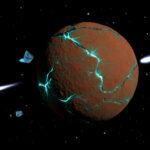Polar Bears Feed Millions across the Arctic
Polar bears live on sea ice and hunt mainly seals. However, they do much more than just hunt. They leave behind carcasses that feed many other species.
In fact, polar bears provide millions of kilograms of food each year for the Arctic ecosystem. Their leftovers attract scavengers such as arctic foxes, gulls and even other marine mammals. Therefore they act as ecosystem engineers in harsh environments.
How the Food Chain Benefits
When a polar bear makes a kill, other animals quickly arrive. For example, foxes and ravens follow the bear to feed on scraps. In addition, microbes and insects break down the remaining flesh, returning nutrients to soil and water. As a result, the entire food web gains a boost.
The feeding process helps many species survive the long Arctic winters. It supports birds, mammals, and even fish populations. This interconnected system shows how important polar bears are beyond their iconic image.
Why This Matters for Conservation
Climate change threatens sea ice, which polar bears rely on to hunt. If bears decline, the food supply for many Arctic species may also drop. Therefore protecting polar bears means protecting entire ecosystems.
Conservation efforts must consider that polar bears’ influence extends well beyond their own survival. Efforts to maintain sea-ice habitats help preserve the cascading benefits across species. In addition, indigenous communities benefit when the ecosystem remains healthy and balanced.






